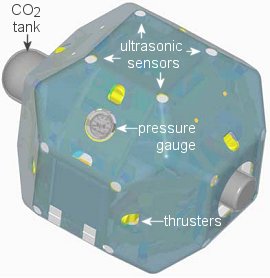Here's the Reuters story on our
US missile program.
The United States has moved its ground-based interceptor missile defense system from test mode to operational amid concerns over an expected North Korean missile launch, a U.S. defense official said on Tuesday.
"It's good to be ready," the official said
I hope to God it is so! Good to hear we are ready.
Japan is nervous. They are building a missile defense system using
Aegis.
Japan plans to equip half a dozen, or more, of its Aegis warships with the SM-3, to provide protection from North Korean, or Chinese, ballistic missiles. The SM-3 missile has been one of the bright spots in the American anti-missile effort. Japan has also agreed to contribute a billion dollars to the three billion dollar development work being done on the SM-3. The U.S. has already stationed Aegis SM-3 equipped ships off the coast of Korea, to provide protection against North Korean missiles.
It's good Japan has bought the Aegis Anti-Missle system. Hopefully they will use it if The North does strike.
"If North Korea test-launches a missile, naturally Japan and the United States will take stern measures," said Chief Cabinet Secretary Shinzo Abe, the government spokesman, suggesting the possibility of economic sanctions.
Japanese officials are exchanging information "around the clock" on a possible launch of the Taepodong-2, which has a range of 3,500 to 6,000 kilometers (2,200 to 3,750 miles), said defense chief Fukushiro Nukaga in Tokyo.
It appears that China does not want North Korea to test the "waters" to see what Japan and the US will do.
But South Korean officials and analysts say North Korea will not actually fire the missile because it is sure to trigger strong punitive measures from the international community, which could threaten the economic survival of the communist regime already suffering from U.S.-led financial sanctions over its nuclear program and financial illegalities.
China opposes the prospective missile launch as it could be used by Japan to step up its efforts toward its missile defenses and stronger security ties with the United States.
"The North's missile threat seems aimed at gaining leverage as its nuclear card is losing effectiveness. With the missile card in hand, the Kim Jong Il regime seeks to have direct talks with the United States," said Koh Yu-hwan, a North Korea specialist at Dongguk University in Seoul.
"If North Korea fires the missile, it is aimed at tightening its grip on the people. This indicates a crack in the North's social control system and serious conflicts among power elite," he said.
According to intelligence sources, the North's state control has been weakened since its economic reform measures in 2002, which brought about negative fallout, including tremendous inflation.
**Update
Captian Ed on the TCS article on
"Star Wars" here.











